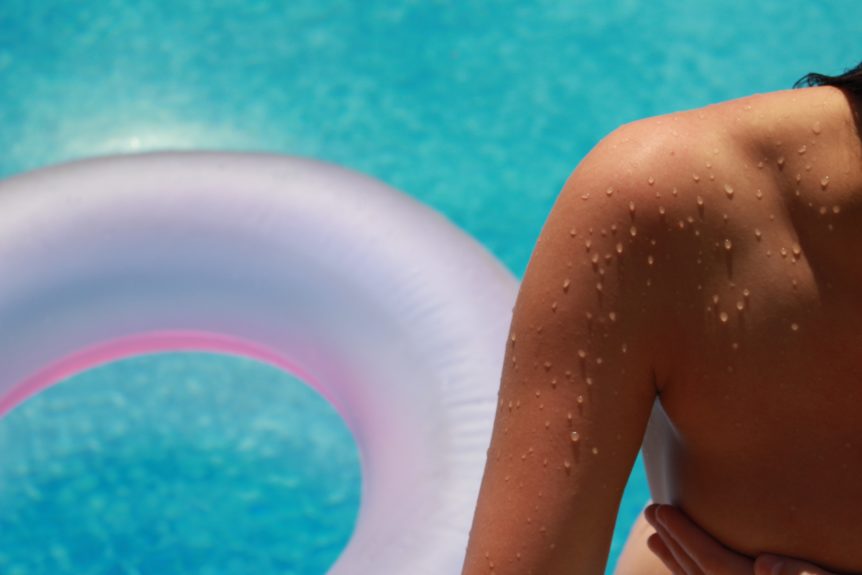With spring break around the corner and a year of being quarantined in our homes, the excitement of imminent warm weather is tangible. With the longer days and higher temperatures come more opportunities for us to get out in the sun and spend some much-needed time outdoors.
For many of us, the season kicks off with a spring break trip to Florida or another sunny destination. When we look in the mirror and look at our pale skin, however, the thought crosses our mind of getting the fabled base tan before the sun arrives.
Instantly, you think before putting that sunscreen on that maybe if you just let your skin get a little bit tanned at the beginning of the summer, then you can avoid getting those painful pink burns and you can avoid smearing on gobs of sunscreen for the rest of the summer.
Of all the stories I hear, this is the one that really troubles me the most. “Doc, I’m going to the tanning booth to get my base tan before summer starts,” or “But Doc, I burn badly once at the start of the season, but then I’m good to go until the fall.”
To appreciate why this is such a dangerous way of thinking, you have to understand what tanning is at a physiological level. In other words, what is the point of tanning in the first place, and why does the skin get darker when you’re out in the sun or under a tanning lamp?
Remember from your biology class that all cells contain DNA (deoxyribonucleic acid), the molecules that determine how cells grow and behave over the course of your life. Because it sits at the interface between your body and the outside world, the DNA in your skin cells is under perpetual attack from the elements.
The most dangerous and prevalent of these forces is ultraviolet (UV) light, whether it be from the sun or an artificial source such as a tanning lamp. Over the eons, our bodies have devised remarkable ways to counter the varying deleterious forces, and tanning is the way the body fights UV. We know exactly what UV does to DNA – it mutates it. This is a proven scientific fact.
UV light takes the normal sequence of DNA molecules and messes it up. Once this sequence is altered, the growth pattern of skin is changed, and our chances of developing skin cancer are increased.
Tanning is caused by increased pigment production in the skin. The pigment itself is called ‘melanin’ and the cells that produce it are known as ‘melanocytes’. The remarkable feature of melanin is that it absorbs UV light – you can think of it like a sponge that just sucks it up.
Unless you have a genetic condition, all of us have some baseline level of melanin production to protect us from day-to-day sun exposure. The melanocytes act as little melanin factories and then distribute their melanin product to their neighboring cells. In fact, we know that there is roughly 1 melanocyte for approximately 36 surrounding cells.
Once inside these cells, the melanin amazingly organizes itself into a shield that sits like a cap over the nucleus – where the DNA is kept. This way, when UV hits the cell, it is absorbed by the melanin and cannot reach the DNA. It protects our genetic information.
Now, nature intended for us to stay where we are from, and this is why people who live closer to the equator have a naturally higher level of melanin – i.e., those people who live in sunnier places have darker skin to protect them from the sun’s harmful rays.
Once we start exposing ourselves to increased levels from UV, more than we were naturally meant to incur, we start accumulating changes, or mutations, to the DNA in our skin. The body can detect damage to DNA and responds to this by creating more melanin in an effort to protect the DNA from further damage.
If you read one line in this entire article it is this: TANNING IS THE BODY’S RESPONSE TO DNA DAMAGE! And DNA damage leads to cancer.
So if your skin is getting darker, or staying dark from whatever your baseline color is, that means you are continuously damaging the DNA in your skin and putting yourself at risk for developing potentially fatal skin cancer. Not to mention that you are prematurely aging your skin and increasing your chances of developing wrinkles and looking 20 years older than you really are. If that’s not enough, these changes to your DNA accumulate over the course of your life.
So if you want to argue that you only sit in the sun in short spurts, that is a worthless argument, because your skin doesn’t know if you get your UV 4 times for 15 minutes or once for an hour – it’s all the same (in fact there is evidence that indicates intermittent sun exposure is worse for you).
So for all of you beachgoers that think you are doing yourself good by getting that ‘base tan’, in reality, you are worse off because you have removed your body’s natural warning sign to seek shade – the burn – and allowing your DNA to accrue more and more damage, ultimately increasing your chances for developing skin cancer.

